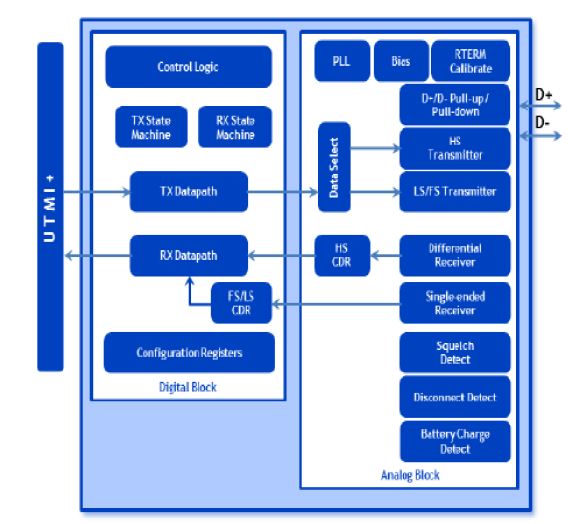The USB2.0 PHY IP is an entire physical layer (PHY) IP solution built for high performance and low power consumption. For usage with either hosts, devices, or OTG function controllers, the USB2.0 IP implements a High-Speed USB 2.0 transceiver. The USB2.0 PHY IP is compatible with Full-Speed (12Mbps) and Low-Speed (1.5Mbps) data rates and complies with the UTMI+ level 3 specification. It integrates mixed-signal circuits to support High-Speed data rate at 480Mbps. The USB2.0 PHY IP also supports the additional USB Battery Charging requirements, which are aimed at mobile and consumer product applications. The USB2.0 PHY IP transceiver is designed to have a small chip size and low power consumption without compromising performance or data throughput. To enable complete support for host and device functionality, the USB2.0 PHY IP includes a full on-chip physical transceiver solution with Electrostatic Discharge (ESD) protection, a clock generating block provided by an internal PLL, and a resistor termination calibration circuit.

Deliverables
Graphic Data System II File with Layer Definitions
Layout Exchange Format Illustrating Placement and Routing
.lib File Containing Timing, Power, and Noise Characteristics
Verilog Model Describing Functional Circuit Operations
Standard Delay Format (SDF) Timing Applied to Circuit Netlist
Application Notes Offering Insights into Layout Optimization
LVS and DRC Verification Results Documentation